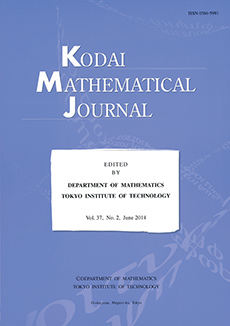Abstract
In this paper we consider "parabolically" scaled centered tagged particle dynamics for a stochastic ranking process (regarded as a particle system), which is driven according to an algorithm for self-organizing linear list of a finite number of items. We let the number of items to infinity and show that the scaled tagged particle weakly converges to a "diffusion" processes with occasional jumps, in which the particle jumps to 0 when its own Poisson clock rings and behaves as a "diffusion" process otherwise. The "diffusion" is decomposed into a sum of independent continuous Markov Gaussian processes with a random covariance. Intuitively, each component process is constructed by infinitely many particles having the same intensity behind the tagged particle. This random covariance depends only on its own last Poisson time. In multi-tagged particle system, "hyperbolically" scaled tagged particles decompose [0,1] interval into L + 1 layers, where L is a number of tagged particles. Intuitively, infinitely many particles in each layer construct a "diffusion" processes, which is interpreted as a shrunk version of that in the single tagged particle case. Each "parabolically" scaled centered tagged particle holds in common these "diffusion" processes if the corresponding layer is behind the corresponding "hyperbolically" scaled tagged particle.
Citation
Yukio Nagahata. "Functional central limit theorem for tagged particle dynamics in stochastic ranking process." Kodai Math. J. 36 (3) 409 - 427, October 2013. https://doi.org/10.2996/kmj/1383660689
Information





